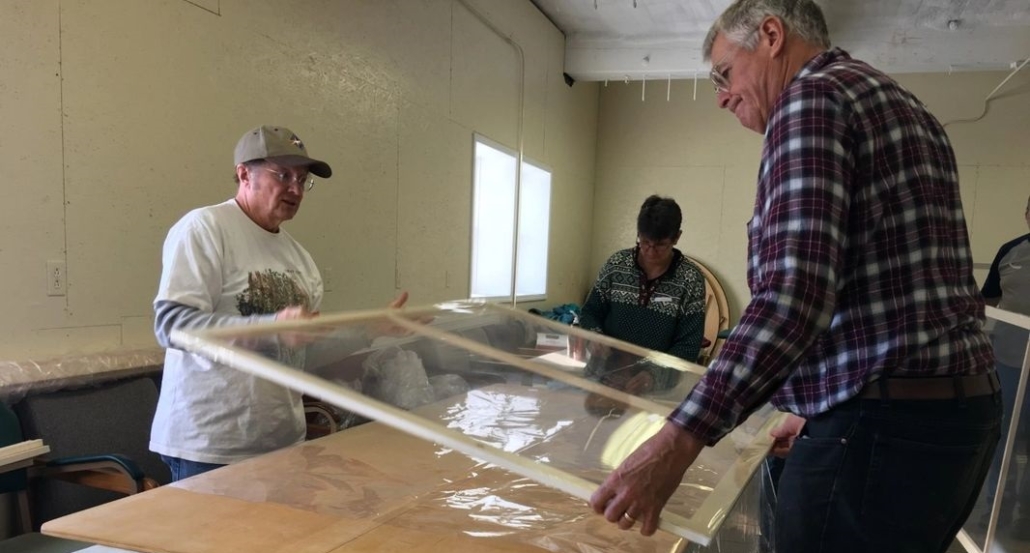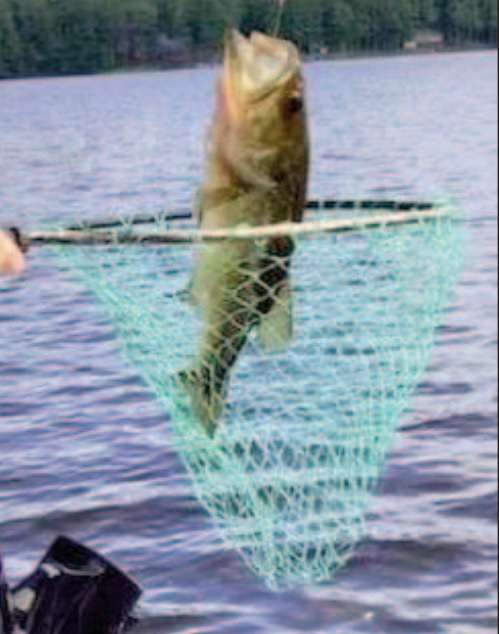Citrus orders deadline nears
/0 Comments/in Community, Palermo/by Website Editor The deadline for ordering bright, tangy, and sweet citrus in time for Christmas is December 11. You can have it shipped anywhere in the lower 48 states for one low price. Just go to https://www.floridaindianrivergroves.com/ecommerce/1018996 and take a look at all the healthy goodness you can send!
The deadline for ordering bright, tangy, and sweet citrus in time for Christmas is December 11. You can have it shipped anywhere in the lower 48 states for one low price. Just go to https://www.floridaindianrivergroves.com/ecommerce/1018996 and take a look at all the healthy goodness you can send!
Proceeds from this sale benefit the Living Communities Foundation, which hosts the Palermo Food Pantry, in the Palermo Community Center, as well as the Palermo Community Garden and the Great ThunderChicken Teaching Drum.
The Palermo Community Garden is also eligible for a Challenge Grant from SeedMoney.org. Last year they raised over $1,100 through this crowdfunding platform, and they hope to get somewhere near that this year, but they only have until December 15, so please share your resources with them so they can share fresh, organic food with neighbors! Please go to https://www.donate.seedmoney.org/7991/palermo-community-garden and know that your contribution helps to alleviate food insecurity right here in our area.
F.A. Peabody Insurance opens new central Maine branch
/0 Comments/in Community, Palermo/by Website Editor Christopher Anderson, President of F.A. Peabody Insurance (FAPCO,) is announcing the opening of the agency’s 11th branch office in Palermo. Palermo is centrally located in the tri-city community of Belfast, Augusta and Waterville.
Christopher Anderson, President of F.A. Peabody Insurance (FAPCO,) is announcing the opening of the agency’s 11th branch office in Palermo. Palermo is centrally located in the tri-city community of Belfast, Augusta and Waterville.
With the addition of the Palermo branch, Christine Huntress joins the F.A. Peabody staff as a seasoned insurance professional with over 35 years of experience. She moved from York to Palermo in 2018 and has shown herself to be a valuable asset in expanding insurance services to the Central Maine community. By joining FAPCO, Christine will be in a better position to also increase the commercial insurance offering to the community.
“Christine brings extensive expertise in property casualty insurance to the F. A. Peabody Insurance Division. Her professionalism and friendly business style compliments our agency’s culture,” states Anderson. Christine says, “I’m very excited to join the F. A. Peabody team. Each client is unique with different insurance needs and I welcome every challenge.”
The F.A. Peabody Company was founded in 1927 in Houlton, and over its rich 95-year history has launched additional branch offices in Madawaska, Caribou, Presque Isle, Mars Hill, Sherman, Lincoln, Calais, Hampden, Westbrook, and now, Palermo.
Christine can be reached at (207)993-5002 or christine.huntress@fapeabody.com.
Whitefield Lions announce poster contest winners (2022)
/0 Comments/in Chelsea, Community, Palermo, Whitefield, Windsor/by Website Editor
From left to right, Madyson Glidden, of Whitefield, Avery Childs, of Palermo, Aurora Peabody, of Jefferson Village, Skyler McColet, of Chelsea , and Zoie Elliot, of Windsor. (contributed photo)
For over three decades, Lions clubs around the globe have been sponsoring a very special art contest in schools and youth groups. Creating peace posters gives children everywhere the chance to express their visions of peace and inspire the world through art and creativity. The Whitefield Lions Club has announced this year’s winners of their annual Peace Poster Contest. This year’s theme is “Lead with Compassion”. Area schools who participated were Jefferson, Whitefield, Palermo, Chelsea, and Windsor. Local community members participated in judging these fine works of art. The Whitefield Lions expresses appreciation to all the families and teachers who came to the spaghetti dinner and supported their students in the awards night held on October 27. These winners will go on to the state level competition.
LETTERS: Smith has strong commitment
/0 Comments/in Letters to the Editor, Palermo/by Website Editor To the editor:
To the editor:
Thank you for including my letter in support of my wife, Katrina Smith, for State Representative for District #62. While this is not an unbiased letter I think you should know the level of commitment she has to the people of Maine from a personal perspective. Katrina’s heart is for the people. Growing up in Appleton with a single mom she experienced heartache and hardship at a young age that have formed her into the leader she is today. Her community rallied around her family in their time of need and she never has forgotten what it means to help your neighbor, without respect to party affiliation, just the way Maine has always been.
Katrina also holds steady to the belief that with enough work and constant study any obstacle can be overcome, this would serve the state incredibly well in our time of great inflation and need. Katrina is my partner in our successful renovation business that works so well largely due to Katrina’s commitment to a thorough understanding of problems and an incredible ability to think outside of the box to solve those problems. I know she will bring this ability to Augusta and will find ways to advance Maine in the direction it so desperately needs to go. Your faith in Katrina will not return empty.
Thank you.
Michael Smith,
Palermo
LETTERS: Swift will defend my families reproductive freedoms
/0 Comments/in Letters to the Editor, Palermo/by Website Editor To the editor:
To the editor:
Please join me in voting for Pam Swift for Maine House District #62. As a multi-term, elected member of the Palermo Select Board, Pam has a public record of working cooperatively with others. As a former physician with two decades of experience, Pam will defend my family’s freedom of reproductive choice. Pam Swift is the only candidate with these two qualifications and is the best choice for District #62.
Robert Morrison
Palermo
China workshop aims to bring area towns together
/0 Comments/in Benton, Central ME, China, Community, Events, Kennebec County, Palermo, Sidney, Vassalboro, Weeks Mills, Windsor/by Eric W. Austin
Volunteers prepare window inserts at a previous WindowDressers workshop, in Vassalboro. (photo courtesy of Vassalboro Historical Society)
by Eric W. Austin
CHINA, ME — Planned for the second week in November starting just after Election Day, the China Window Dressers workshop is moving full steam ahead. The intent of the workshop is to build low-cost window inserts to reduce heating expenses for homeowners in central Maine. The organizers have spent the past year taking orders and visiting local homeowners to measure the windows requiring inserts, and now they are looking for volunteers to help at the upcoming workshop.
Sponsored by the China for a Lifetime Committee, a local group dedicated to philanthropic activities meant to improve the quality of life for China residents, and assisted by other local organizations, the initiative is modeled after the classic “barn-raising” community efforts of the past, with residents working together for the benefit of everyone.
Committee chairman Christopher Hahn describes it this way: “The workshop is a great chance for the community to come together and help one another during these tough financial times. Such events don’t happen as often as they should anymore in this age of Facebook and online Zoom meetings, so we jumped at the opportunity to organize this workshop. It fits right in with our mission of ‘neighbors helping neighbors.’ I hope to see many familiar faces and hopefully some new ones.”
The committee has received more than 130 orders for window inserts from over two dozen local clients across central Maine. Although the workshop will take place at the China Conference Center, orders have been open from any of the area towns and volunteers for the upcoming build workshop do not need to have ordered inserts or live in China. The workshop will run from Wednesday, November 9, through Sunday, November 13. Work shifts are divided into a morning shift from 8:30 a.m. – 12:30 p.m., and an afternoon shift from 1 – 5 p.m. Food will be provided by community volunteers between shifts. The first two days are devoted to putting together the wooden frames for the window inserts, while the next two days will be for wrapping those frames in plastic and foam. Sunday will serve as an overflow day if everything cannot be completed by Saturday evening.
No experience is necessary to help out, and there are still plenty of spots that need to be filled. Hahn says they are aiming for eight people per shift. The work is not complicated, and designed to flow through an assembly line process, making it easy for anyone to participate. Participants from earlier workshops will be on hand to answer any questions and provide guidance for volunteers.
For those interested in signing up to participate in the workshop, there are several ways to get involved. The easiest way is to visit the Window Dressers website at windowdressers.org. Click on “Community Builds” link on the menu at the top-right of the page, then scroll down to the China build and click where it says “Sign up to volunteer”. (Click here to go there directly.) That will take you to a page where you can choose which time-slot best fits into your schedule.
If you’re not tech-savvy, or don’t have internet access, you can also send an email to ChinaforaLifetime@gmail.com or call the China town office at 445-2014 and let them know what days you are available to help.
More information about the China for a Lifetime committee can be found on their website at chinaforalifetime.com.
EVENTS: Palermo post to hold 10th annual craft fair
/0 Comments/in Events, Palermo/by Website Editor Malcolm Glidden American Legion Post #163, in Palermo, on the Turner Ridge Road, across from ball fields, will be holding its 10th annual craft fair on Saturday, October 29, from 9 a.m. – 2 p.m. Proceeds from table fees and bake sale will sponsor sending students to Dirigo State and adopting six veterans, and filling their Christmas wish list. There is a variety of area crafters, bake sale, door prizes and a raffle with over 30 items on the list. This craft fair is in memory of Clayton and Pauline York, so all items on raffle are from their family members.
Malcolm Glidden American Legion Post #163, in Palermo, on the Turner Ridge Road, across from ball fields, will be holding its 10th annual craft fair on Saturday, October 29, from 9 a.m. – 2 p.m. Proceeds from table fees and bake sale will sponsor sending students to Dirigo State and adopting six veterans, and filling their Christmas wish list. There is a variety of area crafters, bake sale, door prizes and a raffle with over 30 items on the list. This craft fair is in memory of Clayton and Pauline York, so all items on raffle are from their family members.
Dennis Keller is NAIFA-Maine J. Putnam Stevens award recipient
/1 Comment/in Community, News, Palermo/by Website EditorThe J. Putnam Stevens Award is given to the person who has rendered outstanding service to their industry and community in the State of Maine. Dennis Keller, of Palermo, has been in the insurance industry with State Farm Insurance since 1985 and joined the National Association of Insurance and Financial Advisors (NAIFA) shortly after that. He has mentored countless agents throughout the years, has achieved many awards and milestones with State Farm, is a 20-year veteran of the United States Air Force (retired). He is devoted to his family, church, community and office staff, all of whom have been recipients of his generosity as he graciously and often sacrificially shares his time, wisdom, resources and energy.
He has achieved many other awards and milestones with State Farm, including Chairman’s Circle, Honor Club (for 36 consecutive years), Mutual Fund Leader, and Zone Senior Vice-President Club.
Dennis is a member of the Kennebec Valley Chamber of Commerce, an ardent supporter of Special Olympics Maine, and a benefactor for the Fair Haven Camps, in Brooks. He recently spearheaded a fundraising campaign collecting over $10,000 to help the camp rebuild after a fire. Dennis is a perennial volunteer with Habitat for Humanity, and as the oldest member on a recent build, was the first to volunteer on the roof.
Dennis and his wife, Miriam, reside in Palermo. They have two grown children, Misty, of Palermo, and Matthew, of Knoxville, Tennessee, and five grandchildren in Maine and Japan.
J. Putnam Stevens was born in Winthrop, Maine, on November 24, 1852. He was appointed General Agent of the Massachusetts Mutual Life Insurance Company on September 1, 1887. Throughout his more than 46 years of service, he was intensely loyal to his fellow associates, to the industry and to his company.
The J. Putnam Stevens Award is given to the person who has rendered outstanding service to their industry and community in the state of Maine. It is not intended to restrict the award only to agents and/or advisors, but rather to recognize those people, even outside the industry, who have advanced the cause of the life insurance profession.
Interesting links
Here are some interesting links for you! Enjoy your stay :)Site Map
- Issue for March 27, 2025
- Issue for March 20, 2025
- Issue for March 13, 2025
- Issue for March 6, 2025
- Issue for February 27, 2025
- Issue for February 20, 2025
- Issue for February 13, 2025
- Issue for February 6, 2025
- Issue for January 30, 2025
- Issue for January 23, 2025
- Issue for January 16, 2025
- Issue for January 9, 2025
- Issue for January 2, 2025
- Issue for December 19, 2024
- Issue for December 12, 2024
- Issue for December 5, 2024
- Issue for November 28, 2024
- Issue for November 21, 2024
- Issue for November 14, 2024
- Issue for November 7, 2024
- Issue for October 31, 2024
- Issue for October 24, 2024
- Issue for October 17, 2024
- Issue for October 10, 2024
- Issue for October 3, 2024
- Issue for September 26, 2024
- Issue for September 19, 2024
- Issue for September 12, 2024
- Issue for September 5, 2024
- Sections
- Our Town’s Services
- Classifieds
- About Us
- Original Columnists
- Community Commentary
- The Best View
- Eric’s Tech Talk
- The Frugal Mainer
- Garden Works
- Give Us Your Best Shot!
- Growing Your Business
- INside the OUTside
- I’m Just Curious
- Maine Memories
- Mary Grow’s community reporting
- Messing About in the Maine Woods
- The Money Minute
- Pages in Time
- Review Potpourri
- Scores & Outdoors
- Small Space Gardening
- Student Writers’ Program
- Solon & Beyond
- Tim’s Tunes
- Veterans Corner
- Donate




